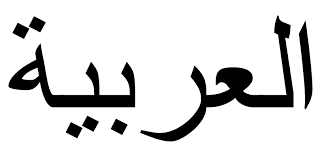Arabic? Language and dialects – what about Egypt?

It is not always easy to understand the differences between the different “Arabics” – not even as a student of the language(s) – at least not at first until you have actually experienced it.
Generally speaking, we differ between:
1) Classical Arabic (such as the language of the Quran but also other older texts and literature),
2) MSA i.e. Modern Standard Arabic which is the modern standard language taught in schools all over the Arab world, is the news language and to large part the standard language used in books, literature and more.
It is not actually a spoken language per se but something which can be used when people with different Arabic dialects meet and don’t actually understand all words of each other’s respective dialects. Certain Arabic dialects are particularly “tricky” if you don’t have previous knowledge of them, such as the Moroccan, Algerian and Tunisian dialects. It would be much like a Danish and a Swedish person having a sorts of Scandinavian standard language to use when we don’t understand what the other person is saying 😉.
3) The different Arabic dialects are divided into around 5 or 6 main areas (which is more or less geographical, but still with large varieties within the separate areas). So, we have the: 1) North African or Maghrebi which is mainly Moroccan, Algerian and Tunisian – similar in style with a lot of French in them and Berber. 2) Levantine orSyro-Palestinian which broadly speaking includes the Lebanese, Palestinian, Syrian and Jordanian dialects. 3) Gulf which includes most dialects in the Arabian Peninsula, i.e. Saudi, Qatar, Kuwait, Bahrain, Oman, UAE and Yemen – these dialects have a lot of similar traits such as the usage of more “guttural” sounds further down in the throat. 4) Libya is most of the time treated as its own dialect, and so is 5) Iraq (which is sometimes called Mesopotamian and then include parts of the neighbouring countries). Southern Iraq shares a lot of the traits with the Gulf dialects. And finally, 6) Egypt where Sudan is also part of (mostly).
The Egyptian dialect is very particular and well-known throughout the Arab world through films, series and music. Egypt has been and is a massive producer within these industries and known for its comedies and particular sense of humour😊.
It is crucial to understand that the dialects (and it is in fact mis-leading to call them that as they are like different languages) are like different languages with more or less similarities to the Modern Standard Arabic. It is a fairly wide-spread thought that the Levantine, i.e. Syro-Palestinian dialects are the closest to the MSA.
For a long time, it was more or less divided so that the dialects were spoken and the MSA was written, but nowadays this has been much more blended so that the dialects are increasingly used in written forms too.
It started digitally as posts on Facebook, chatting on Messenger or writing texts etc. Gradually it became more and more accepted in day-to-day life to write your own dialect.
As a foreign student of Arabic, it is very useful to start with the MSA for a solid basis because the dialects do stem from the standard language. However, you need to pick a dialect to study to be able to speak to people. In Sweden and Europe, the most common dialects taught are either the Egyptian or the Levantine as they are considered the most useful (for a foreign student). However, everything depends on individual goals and needs.
Two examples below of the differences between MSA and Egyptian Arabic in how to say “How are you?”:
Modern Standard Arabic (MSA)
Phrase: كَيْفَ حالُكَ؟ (for males)
Transliteration: kayfa ḥāluka?
Meaning: “How is your condition?”
- For females, it would be: كَيْفَ حالُكِ؟ (kayfa ḥāluki?)
✅ Usage:
- Used in formal contexts: news, books, speeches, formal letters, etc.
- Not commonly spoken in daily casual conversations.
Egyptian Arabic
Phrase: إزيّك؟ (for males)
Transliteration: izzayyak?
Meaning: “How are you?” (literally more like “What’s up with you?”)
- For females: إزيِّكِ؟ (izzayyik?)
✅ Usage:
- Used in everyday conversations across Egypt.
Side-by-side:
| English | Modern Standard Arabic | Egyptian Arabic |
| How are you? (m) | كَيْفَ حالُكَ؟ (kayfa ḥāluka?) | إزّيّك؟ (izzayyak?) |
| How are you? (f) | كَيْفَ حالُكِ؟ (kayfa ḥāluki?) | إزّيِّكِ؟ (izzayyik?) |